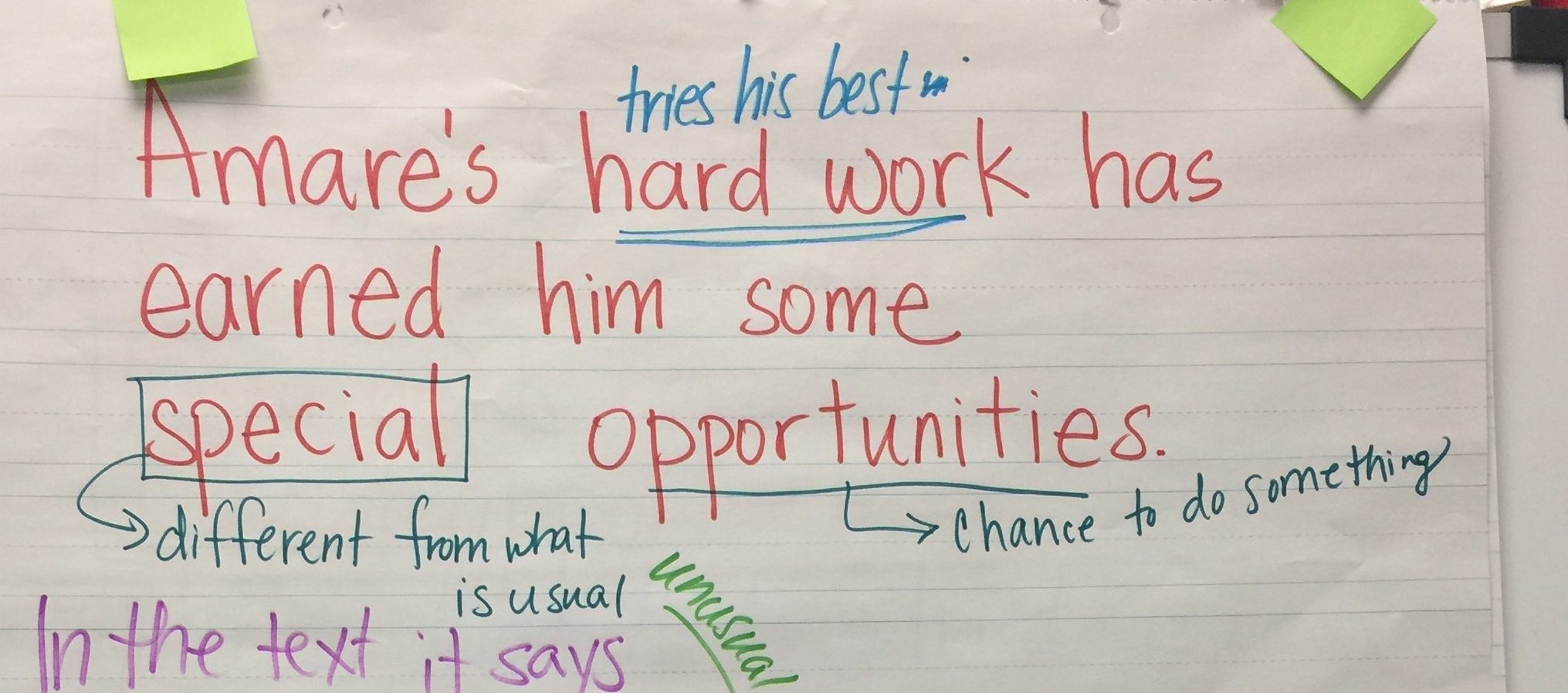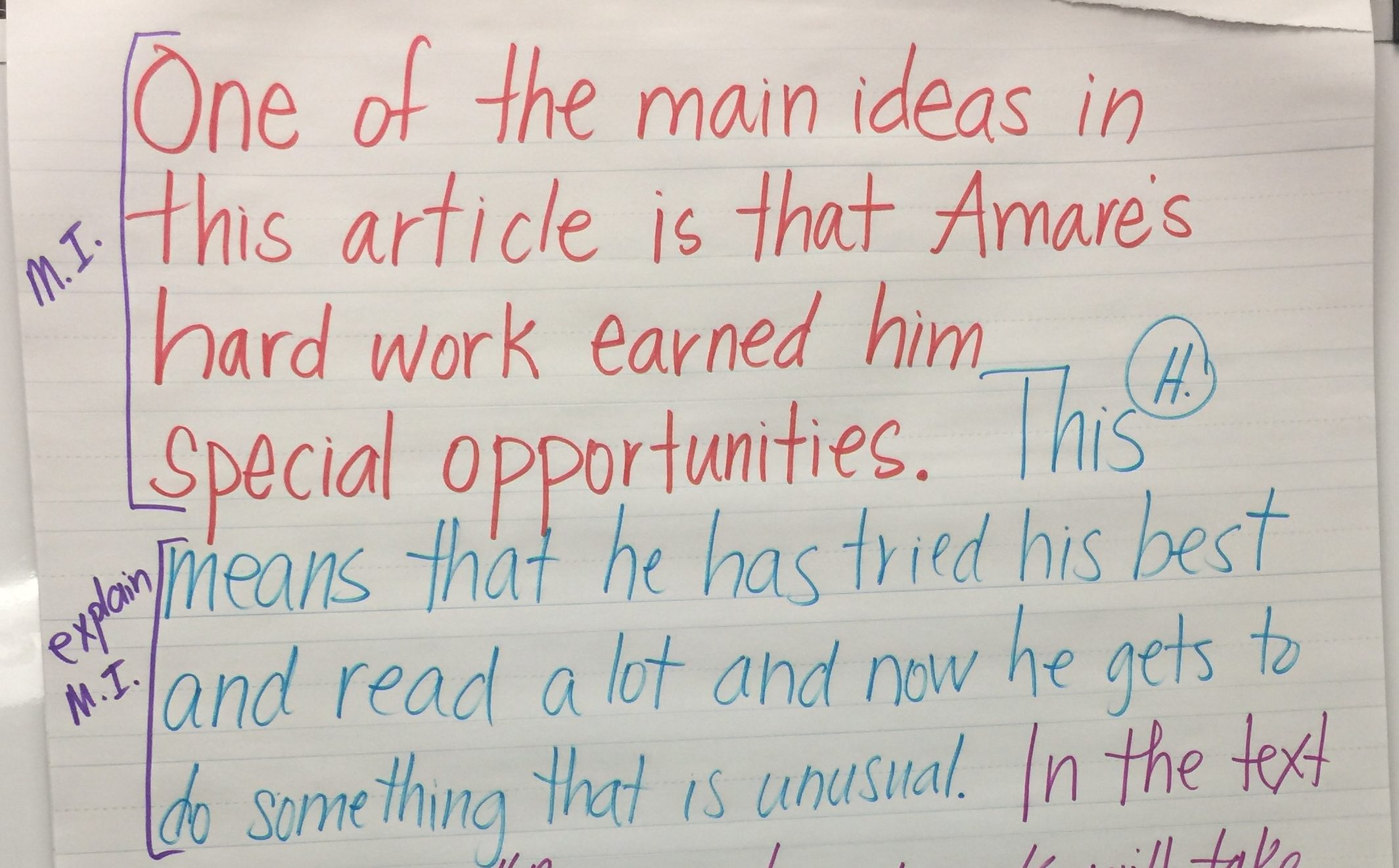
Can your students explain what their main idea statement means? Is a superficial understanding or misunderstanding of the main idea impacting their ability to identify or explain supporting details? We may need to give students time to unpack the main idea.
A few suggestions for helping students unpack a main idea statement:
1. Ask them to define a particular vocabulary word or phrase in the main idea statement. Examples to think about: If the student is writing about how tornadoes are powerful, do they understand that powerful, in this case, means having or producing a lot of physical strength or having an impact on something? Or if they are explaining the achievements of a historical figure, do they understand that achievement means something done successfully with effort, courage or skill? And if they are explaining how skyscrapers have changed over time to become safer, do they understand ideas like change over time (how something becomes or is made different during a period of time) and safer (free from harm or risk) mean? Encourage students to look the word to deepen their understanding of that word and, as a result, the main idea statement.
2. Ask students to underline and annotate key words and phrases in the main idea statement. Below is a photo from a shared “unpacking the main idea” experience with a small group of 3rd/4th grade students in response to a NewsELA article about a blind student named Amare. The annotations might include:
- definitions of less familiar words,
- synonyms of words,
- “this makes me think…” statements
- connections to background knowledge or details in other texts
- etc.

3. Provide time for students to use their annotated main ideas to discuss what they are thinking or understanding–during think-pair-share. I find it helpful to model thinking through the annotated statement and how I would explain the main idea using the annotations.
4. If the students are writing an essay that begins with a main idea statement, ask them to explain the main idea (in a few sentences) before identifying and elaborating on supporting details. The photo below is from the shared writing experience with third/fourth grade students. The second sentence is one that a student “H” composed orally and then I wrote on the chart paper.

Hope this helps.
Sunday
UPDATED 2/17/2021
